Joe William Gray
age ~79
from San Francisco, CA
- Also known as:
-
- Joe W Gray
- Jane Ellin Gray
- Jane E Gray
- Joe E Gray
- Jane M Gray
- Jane E Vogel
- Jane E Moss
- Jane Kiernan
- Janee Gray
Joe Gray Phones & Addresses
- San Francisco, CA
- Carmel, CA
- Lake Oswego, OR
- Portland, OR
- La Jolla, CA
- Livermore, CA
- Martinez, CA
- Concord, CA
- Monterey, CA
- Clackamas, OR
Isbn (Books And Publications)

Flow Cytometry and Image Analysis for Clinical Applications: Proceedings of the International Symposium on Flow Cytometry and Image Analysis for Cli
view sourceAuthor
Joe W. Gray
ISBN #
0444813799


License Records
Joe Gray
License #:
976103 - Expired
Category:
Swimming Pool Operator
Issued Date:
May 14, 2004
Effective Date:
Jul 30, 2008
Expiration Date:
Jun 15, 2008
Type:
Swimming Pool Operator
Joe Gray
License #:
972705 - Expired
Category:
Swimming Pool Operator
Issued Date:
May 5, 2000
Effective Date:
Nov 22, 2004
Expiration Date:
Jun 15, 2004
Type:
Swimming Pool Operator
Us Patents
-
Array-Based Detection Of Genetic Alterations Associated With Disease
view source -
US Patent:6066453, May 23, 2000
-
Filed:Aug 8, 1997
-
Appl. No.:8/908855
-
Inventors:Daniel Pinkel - Walnut Creek CA
Donna G. Albertson - Lafayette CA
Joe W. Gray - San Francisco CA -
Assignee:The Regents of the University of California - Oakland CA
-
International Classification:C12Q 168
G01N 33574
G01N 3353
A01N 5508 -
US Classification:435 6
-
Abstract:The present invention relates to DNA sequences from regions of copy number change on chromosome 20. The sequences can be used in hybridization methods for the identification of chromosomal abnormalities associated with various diseases.
-
Comparative Genomic Hybridization (Cgh)
view source -
US Patent:6335167, Jan 1, 2002
-
Filed:May 14, 1999
-
Appl. No.:09/311835
-
Inventors:Daniel Pinkel - Walnut Creek CA
Joe W. Gray - San Francisco CA
Anne Kallioniemi - Rockville MD
Frederic Waldman - San Francisco CA
Masaru Sakamoto - Tokyo, JP -
Assignee:The Regents of the University of California - Oakland CA
-
International Classification:C12Q 168
-
US Classification:435 6, 435 712, 536 231, 536 243
-
Abstract:Disclosed are new methods comprising the use of in situ hybridization to detect abnormal nucleic acid sequence copy numbers in one or more genomes wherein repetitive sequences that bind to multiple loci in a reference chromosome spread are either substantially removed and/or their hybridization signals suppressed. The invention termed Comparative Genomic Hybridization (CGH) provides for methods of determining the relative number of copies of nucleic acid sequences in one or more subject genomes or portions thereof (for example, a tumor cell) as a function of the location of those sequences in a reference genome (for example, a normal human genome). The intensity(ies) of the signals from each labeled subject nucleic acid and/or the differences in the ratios between different signals from the labeled subject nucleic acid sequences are compared to determine the relative copy numbers of the nucleic acid sequences in the one or more subject genomes as a function of position along the reference chromosome spread. Amplifications, duplications and/or deletions in the subject genome(s) can be detected. Also provided is a method of determining the absolute copy numbers of substantially all RNA or DNA sequences in subject cell(s) or cell population(s).
-
High Density Array Fabrication And Readout Method For A Fiber Optic Biosensor
view source -
US Patent:6417506, Jul 9, 2002
-
Filed:Aug 17, 2000
-
Appl. No.:09/642243
-
Inventors:Daniel Pinkel - Walnut Creek CA
Joe Gray - San Francisco CA
Donna G. Albertson - Lafayette CA -
Assignee:The Regents of the University of California - Oakland CA
Medical Research Council - London -
International Classification:C25D 1300
-
US Classification:250216, 25022711, 204603, 600473
-
Abstract:The invention relates to the fabrication and use of biosensors comprising a plurality of optical fibers each fiber having attached to its âsensor endâ biological âbinding partnersâ (molecules that specifically bind other molecules to form a binding complex such as antibody-antigen, lectin-carbohydrate, nucleic acid-nucleic acid, biotin-avidin, etc. ). The biosensor preferably bears two or more different species of biological binding partner. The sensor is fabricated by providing a plurality of groups of optical fibers. Each group is treated as a batch to attach a different species of biological binding partner to the sensor ends of the fibers comprising that bundle. Each fiber, or group of fibers within a bundle, may be uniquely identified so that the fibers, or group of fibers, when later combined in an array of different fibers, can be discretely addressed. Fibers or groups of fibers are then selected and discretely separated from different bundles. The discretely separated fibers are then combined at their sensor ends to produce a high density sensor array of fibers capable of assaying simultaneously the binding of components of a test sample to the various binding partners on the different fibers of the sensor array.
-
Comparative Fluorescence Hybridization To Oligonucleotide Microarrays
view source -
US Patent:6465182, Oct 15, 2002
-
Filed:Apr 29, 1999
-
Appl. No.:09/302056
-
Inventors:Joe Gray - San Francisco CA
Dan Pinkel - Walnut Creek CA
Donna Albertson - Lafayette CA
Colin Collins - San Rafael CA
Russell Baldocchi - San Francisco CA -
Assignee:The Regents of the University of California - Oakland CA
-
International Classification:C12Q 168
-
US Classification:435 6, 435 911, 435 912, 536 243, 536 2433, 536 266, 536 231
-
Abstract:The present invention provides methods of determining relative copy number of target nucleic acid sequences and precise mapping of chromosomal abnormalities associated with disease. The methods of the invention use target nucleic acid sequences immobilized on a solid surface, to which a sample comprising two sets of differentially labeled nucleic acid sequences are hybridized. The hybridization of the labeled nucleic acid sequences to the solid surface is then detected using standard techniques.
-
Genetic Alterations Associated With Cancer
view source -
US Patent:6475732, Nov 5, 2002
-
Filed:Jul 17, 2000
-
Appl. No.:09/617322
-
Inventors:Laleh Shayesteh - Foster City CA
Joe W. Gray - San Francisco CA -
Assignee:The Regents of the University of California - Oakland CA
-
International Classification:C12Q 168
-
US Classification:435 6
-
Abstract:The present invention provides new probes for the detection of chromosomal alterations associated with cancer, particularly ovarian cancer. The probes bind selectively with target nucleic acid sequences at 3q26.
-
Genetic Alterations Associated With Cancer
view source -
US Patent:6537761, Mar 25, 2003
-
Filed:Jul 13, 2000
-
Appl. No.:09/615440
-
Inventors:Laleh Shayesteh - Foster City CA
Joe W. Gray - San Francisco CA -
Assignee:The Regents of the University of California - Oakland CA
-
International Classification:G01N 3353
-
US Classification:435 71, 435 72, 530350, 5303871
-
Abstract:The present invention provides new probes for the detection of chromosomal alterations associated with cancer, particularly ovarian cancer. The probes bind selectively with target nucleic acid sequences at 3 26.
-
Comparative Fluorescence Hybridization To Nucleic Acid Arrays
view source -
US Patent:6562565, May 13, 2003
-
Filed:Jun 26, 1996
-
Appl. No.:08/670953
-
Inventors:Daniel Pinkel - Walnut Creek CA
Donna Albertson - Cambridge, GB
Joe W. Gray - San Francisco CA -
Assignee:The Regents of the University of California - Oakland CA
Medical Research Council - London -
International Classification:C12Q 168
-
US Classification:435 6, 435 5, 435 911, 435 912, 536 243
-
Abstract:The present invention provides methods of determining relative copy number of target nucleic acids and precise mapping of chromosomal abnormalities associated with disease. The methods of the invention use target nucleic acids immobilized on a solid surface, to which a sample comprising two sets of differentially labeled nucleic acids are hybridized. The hybridization of the labeled nucleic acids to the solid surface is then detected using standard techniques.
-
Capillary Array And Related Methods
view source -
US Patent:6610499, Aug 26, 2003
-
Filed:Aug 31, 2000
-
Appl. No.:09/652873
-
Inventors:Mack J. Fulwyler - Sarasota FL
Joe W. Gray - San Francisco CA -
Assignee:The Regents of the University of California - Oakland CA
-
International Classification:G01N 3353
-
US Classification:435 71, 436 52, 436518, 436534, 4352865, 422 81, 422 82
-
Abstract:The invention provides methods and devices for detecting the presence of one or more target analytes in a sample employing a channel having affixed therein one or more binding partners for each target analyte. Assays are carried out by transporting the sample through the channel to each successive binding partner so that target analyte present in said sample binds to the corresponding binding partner. The sample is then transported beyond the binding partner(s), followed by detection of any target analyte bound to each binding partner. In one embodiment, binding efficiency is increased by the use of segmented transport, wherein a first bolus or bubble of a fluid that is immiscible with the sample precedes the sample during transport and a second bolus or bubble of a fluid that is immiscible with the sample follows the sample. Many configurations are possible for the device of the invention. A preferred device includes: a substrate with a channel formed in its surface, and a cover element that overlies and seals the channel.
Name / Title
Company / Classification
Phones & Addresses
Life Sciences Division Director
United States Dept of Energy
Noncommercial Research Organizations
Noncommercial Research Organizations
1 Cyclotron Rd, Berkeley, CA 94720
Founder
Graychip Inc.
Religious Organizations
Religious Organizations
2314 Ramona St., Palo Alto, CA 94301
President
Hines Nurseries Inc
Flowers, Nursery Stock, and Florists' Supplies
Flowers, Nursery Stock, and Florists' Supplies
Po Box 1449, Vacaville, CA 95696
Website: hineshort.com
Website: hineshort.com
Co-Owner
Stealth Services & Technology
Commercial Physical Research · Mfg Pumps/Pumping Equipment Mfg Air/Gas Compressors
Commercial Physical Research · Mfg Pumps/Pumping Equipment Mfg Air/Gas Compressors
3315 NE 112 Ave, Vancouver, WA 98682
Associate Laboratory Director, Life And Environmen
Berkeley Lawrence Laboratory
Business Services at Non-Commercial Site · General Government
Business Services at Non-Commercial Site · General Government
1 Cyclotron Rd, Berkeley, CA 94720
PASSAGES CONNECTING FATHERS AND SONS, INC
Associate Laboratory Director, Life And Environmen
United States Dept of Energy
Administrative General Economic Programs · Research Laboratory
Administrative General Economic Programs · Research Laboratory
1 Cyclotron Rd, Berkeley, CA 94720
(510)4867600, (510)4864000
(510)4867600, (510)4864000
Founder
Roco Dance & Fitness
Dance Studio/School/Hall
Dance Studio/School/Hall
237 Shoreline Hwy #A, Mill Valley, CA 94941
(415)3886786, (415)3886787
(415)3886786, (415)3886787
Medicine Doctors

Joe Gray
view sourceSpecialties:
Emergency Medicine, Urgent Care Medicine
Work:
First Choice Urgent Care
1945 W County Rd 419 STE 1101, Oviedo, FL 32766
(407)3662890 (phone), (407)3662843 (fax)
1945 W County Rd 419 STE 1101, Oviedo, FL 32766
(407)3662890 (phone), (407)3662843 (fax)
Languages:
English
Description:
Mr. Gray works in Oviedo, FL and specializes in Emergency Medicine and Urgent Care Medicine.
Wikipedia References

Joe Gray (Rugby Union)
Plaxo

Joe Gray
view sourceSeattle, WASales Manager at Palmborg Associates, Inc.

Joe Gray
view sourceColoradoCEO at Gray Enterprises

Joe Gray
view sourceLife Time Fitness

Joe Gray
view sourceOperations Manager at GMAC Bank
News

Driver injured after bus crashes into Hardin Co. home
view source- Joe Gray lives right next door to this home on Leitchfield Road. He was standing in the back yard when he says a school bus came crashing through this face and into this house. He says the bus then bounced off the house, and crashed back into it, finally stopped by this porch.
- Date: Apr 11, 2016
- Category: U.S.
- Source: Google

College Football Picks: Week 14 Predictions for Every Game
view source- an Jose State (3-8, 2-5 Mountain West) is on a five-game losing streak, having scored only seven total points in the last two games. The Spartans' offense fell apart when quarterback Joe Gray got injured in a shutout home loss to Hawaii two weeks ago, and without him there aren't many other options.
- Date: Nov 26, 2014
- Category: Sports
- Source: Google

Artis-Payne, Gus Bus roll as Auburn defeats San Jose State 59-13
view source- Trovan Reed made his first career interception off of San Jose State back up quarterback Joe Gray after switching from receiver to defensive back this offseason. Jermaine Whitehead also became the first Auburn player since 2007 to record and interception in consecutive games.
- Date: Sep 06, 2014
- Category: Sports
- Source: Google

No. 5 Auburn Overwhelms San Jose State 59-13
view source- Jurich completed 16 of 27 passes for 218 yards with one touchdown and two interceptions. Joe Gray took over at quarterback with about 10 minutes remaining and had a pass intercepted near the goal line late in the game.
- Date: Sep 06, 2014
- Category: Sports
- Source: Google

Coloradoans win brutal race up New Hampshire hill
view source- Thirty-year-old Joe Gray captured the men's race Saturday after finishing second last year. Twenty-eight-year-old Shannon Payne took the women's field in her inaugural run up the Northeast's highest peak.
- Date: Jun 21, 2014
- Category: Sports
- Source: Google

Coloradoans win brutal race up New Hampshire hill
view source- The men's and women's division winners this year hail from Colorado Springs, Colorado. Joe Gray captured the men's race, his first time breaking the tape after a second-place finish last year. Shannon Payne took the women's field.
- Date: Jun 21, 2014
- Source: Google

Manning still has strong fan base in Indianapolis
view source- I think everyone is pulling for him, said Joe Gray, a 59-year-old Colts season ticket holder who was impressed by the standing ovation Manning got when he returned to Lucas Oil Stadium in October. Im not saying I dont like Luck, I just wish Peyton was still here.
- Date: Jan 31, 2014
- Category: Sports
- Source: Google

KC hospital has quick gene test for sick babies
view source- The idea behind the test is to take advantage of what is known about disease symptoms to narrow the search for genetic aberrations. And that, said Dr. Joe Gray, an expert in genome analysis at Oregon Health and Science University, is a good step in the right direction.
- Date: Oct 04, 2012
- Source: Google

Joe Robert Gray Jr.
view source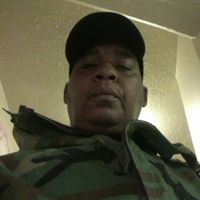
Joe Ann Gray
view source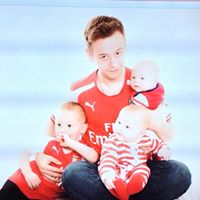
Joe Intervention Gray
view source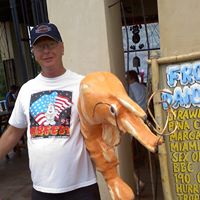
Michael Joe Gray
view source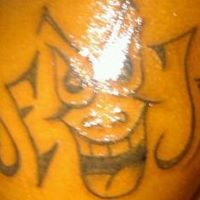
Joe Trusmoker Gray
view source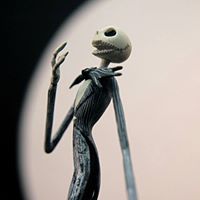
Joe Digger Gray
view source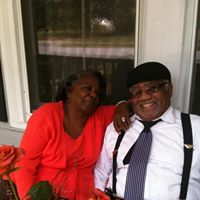
Joe Ann Gray
view source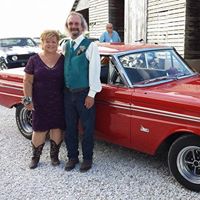
Joe Gray
view sourceYoutube
Classmates

Joe Gray
view sourceSchools:
St. Basil High School Pittsburgh PA 1964-1968
Community:
Barbara Krell, William Perry, Terrance Odendahl

Joe Gray
view sourceSchools:
Ellard High School Bruce MS 1945-1949
Community:
Maida Collins, Jon Crocker

Joe Gray
view sourceSchools:
Avella High School Avella PA 1987-1991
Community:
Lorraine Yocum, Neil Clough, Rob Valduga

Joe Gray
view sourceSchools:
Great Valley High School Malvern PA 1963-1967
Community:
Carl Reason, Michael Gunther, Rick Kephart

Joe Gray
view sourceSchools:
George Stevens Academy Blue Hill ME 1989-1993
Community:
Benjamin Long, Evangeline Dyer, Panama Geddy

Joe T Gray Jr (Gray)
view sourceSchools:
Tilden Technical High School Chicago IL 1980-1984
Community:
Art Balog, Joan Hlavin

Joe Gray
view sourceSchools:
Grant Community High School Fox Lake IL 1984-1992
Community:
Erick Miller, Ralph Komives
Myspace
Flickr
Googleplus

Joe Gray
Lived:
Simi Valley, CA
Woodland Hills, CA
Tarzana, CA
West Hills, CA
Reseda, CA
Novato, CA
Mill Valley, CA
Framingham, MA
Sunnyvale, CA
San Fransisco, CA
Woodland Hills, CA
Tarzana, CA
West Hills, CA
Reseda, CA
Novato, CA
Mill Valley, CA
Framingham, MA
Sunnyvale, CA
San Fransisco, CA
Work:
Late Nite Big Band - Owner/Leader (2008)
Gray Printing and Engraving - Owner (1986)
Gray Printing and Engraving - Owner (1986)
Education:
California State University, Northridge - Music, Reseda High School
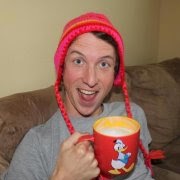
Joe Gray
Work:
Pixel Memory - Drums
Mother Records - DJ/Producer/Promoter
Mother Records - DJ/Producer/Promoter
Education:
Santa Clara University - English
Tagline:
Wentworth
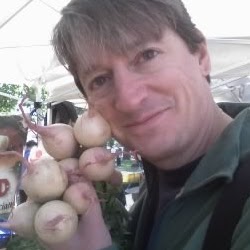
Joe Gray
Work:
Chicago Tribune - Food editor
About:
Chicago Tribune food editor Joe Gray edits food coverage for Chicago Tribune's Good Eating section.
Tagline:
Joe Gray is food editor for Chicago Tribune
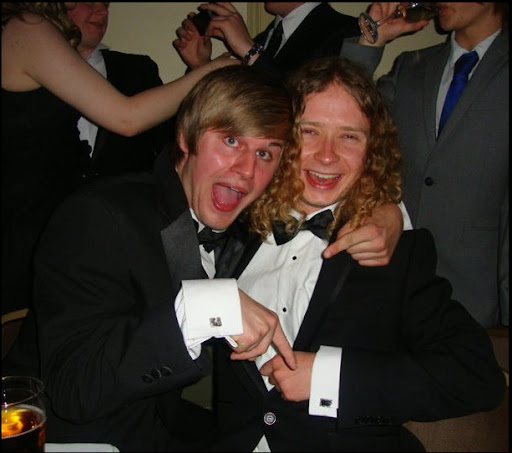
Joe Gray
Education:
St. Thomas More - A-Levels
Tagline:
Quack

Joe Gray
Education:
Purdue University - Network Engineering

Joe Gray

Joe Gray

Joe Gray
Get Report for Joe William Gray from San Francisco, CA, age ~79




















